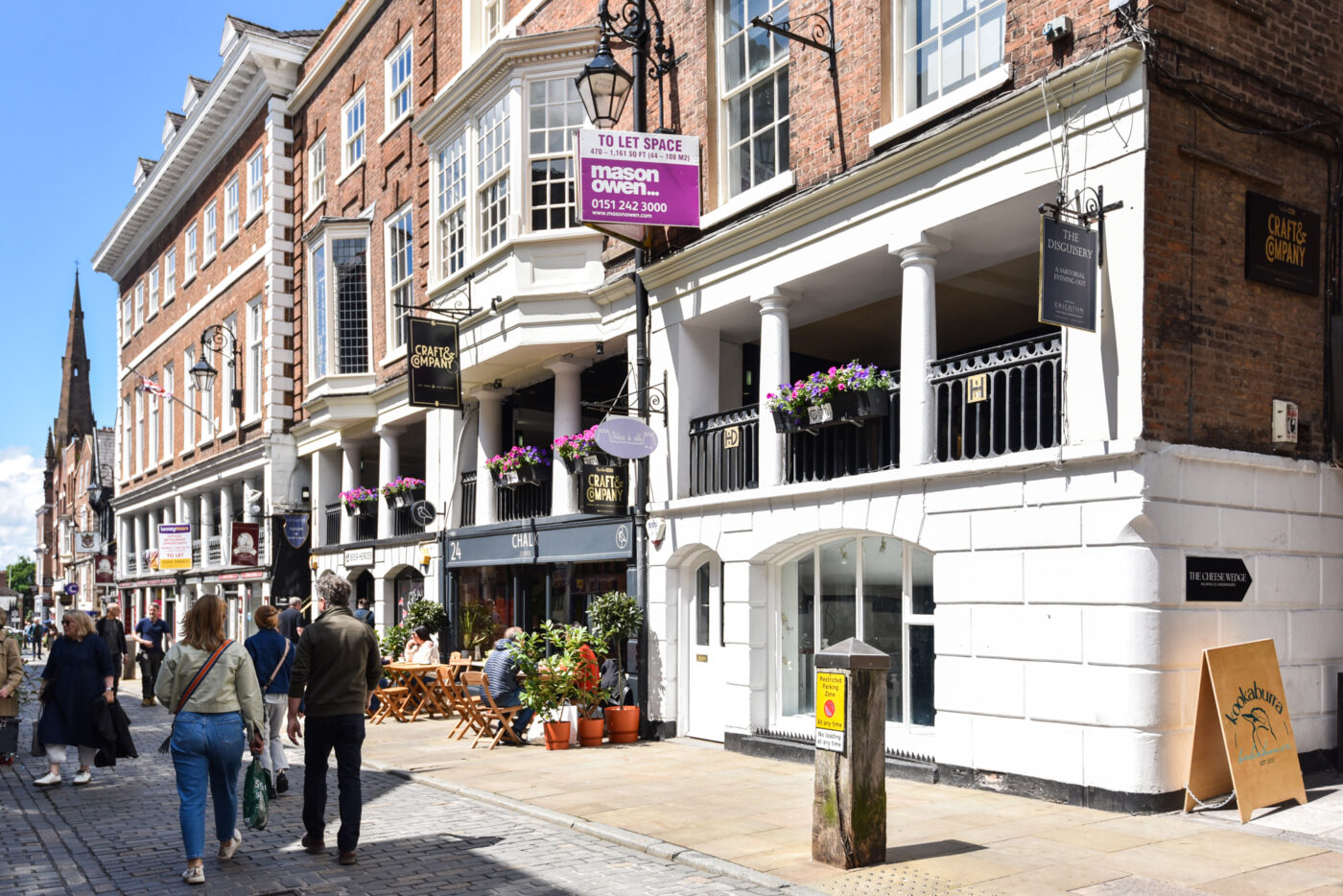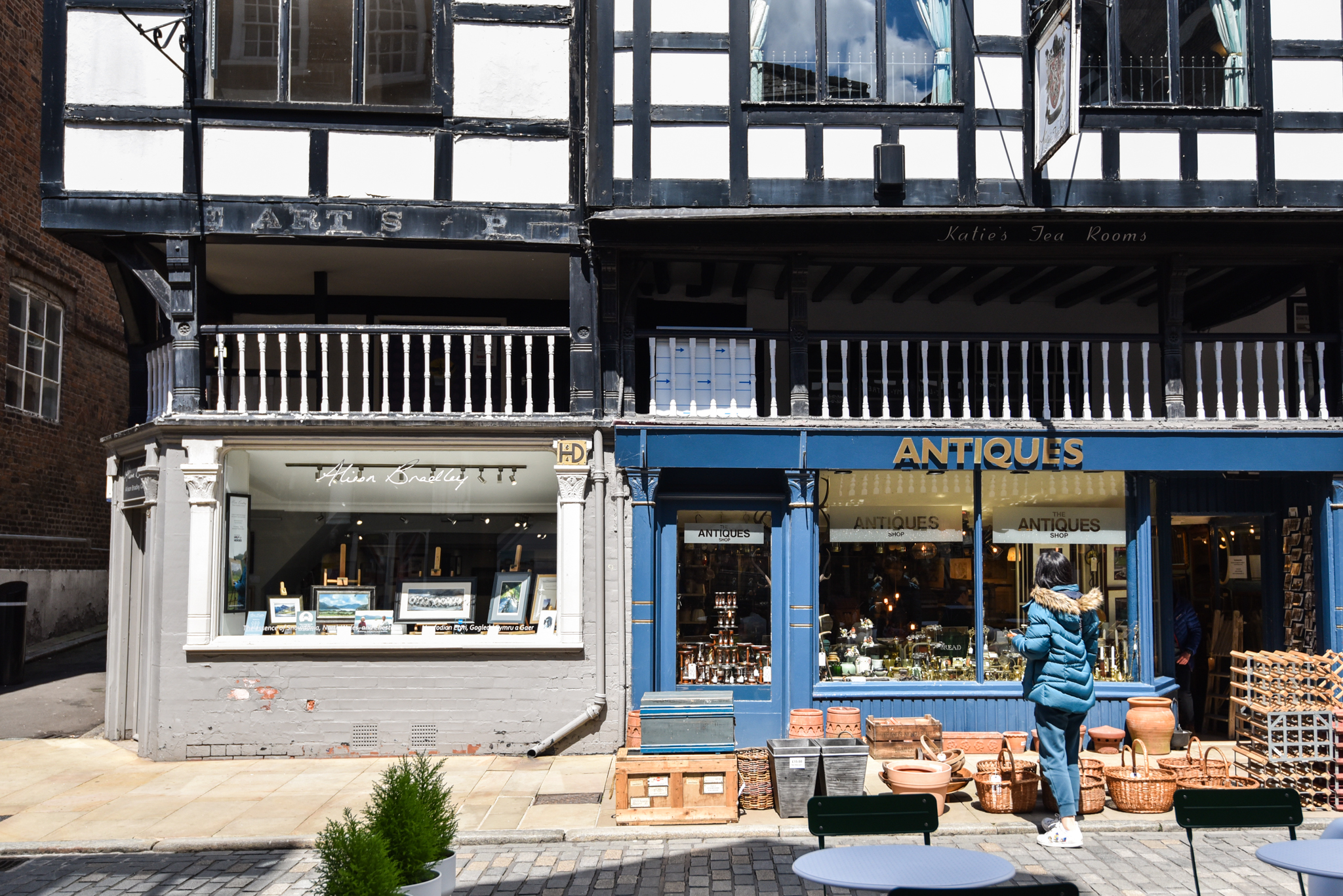Heritage Values Past, Present and Future
- | Daniel Potts

Changing shopping patterns and increased online purchases have presented ever-increasing challenges to the prosperity of local high streets and town centres. The recent pandemic has only helped to accelerate this incremental decline, which has resulted in increased numbers of unoccupied properties, fragmented and transient ownership patterns, a lack of funding for maintenance, increased antisocial behaviour and criminal damage. This has left many businesses fighting for their very survival. As the high street looks to find its new position within an ever more on line society, various planning initiatives have been developed to help with this transition. The most prolific of these is the newly formed ‘Heritage Action Zones’ funded by Historic England, which seeks to revitalise areas that have deteriorated through decades of neglect, recognise and celebrate their unique character and heritage, and help instil a sense of local pride.
The Chester High Street Heritage Action Zone is located within the Chester City Conservation Area and designated Area of Archaeological Importance. With £1.08m of Government funding, delivered through Historic England, the Chester High Street Heritage Action Zone will sit within Chester’s wider regeneration plan to bring vibrancy back to the city centre. Having already developed the Conservation and Management Plan for the area, Donald lnsall Associates already had an intimate knowledge of the area and were subsequently called in to lead the project in March 2021.
Chester itself is the Roman Deva and once stood as one of the principal towns of England. The four streets forming the centre of this historic city are based on the layout of a Roman garrison, subsequently overlaid in medieval times with typical long narrow building plots. A curious and unexplained feature of Chester’s four principal streets (Northgate, Eastgate, Bridge Street and Watergate) is that the street level is higher than the internal floor level of the flanking properties. There is also a system of galleried walkways that run above the shops at street level, with access to an upper tier of shops at first floor, which are collectively referred to as the Rows and featured heavily in the works of watercolourist Louisa Rayner (1832-1924). This complex arrangement has been developed, sustained and carefully guarded since at least the 13th century and is unique within Western Europe.
The origins and peculiar character of the Chester Rows have been subject to speculation for nearly half a millennia. The antiquarians and early commentators seem to have had a desire to define one factor as the key to their origins. However, the Rows are complex and likely resulted from a range of different factors unique to the commerce, topography and building expertise of Chester. For example, the prosperity and building expertise brought to the city by the military campaigns of Edward I in North Wales and experimentation with urban forms such as bastides imported from southwest France. However, as towns were created for and prospered on trade, commerce must have been a major driving force behind their development. Merchants lived and worked in a relatively small area that was contained within the centre of a walled city. Therefore, when wealth and opportunity came there was very little space to expand. The Rows effectively doubled the commercial potential of each property and also provided shelter from the rain and shade from the sun, which struck the 16th and 17th century commentators as being ‘very civilized.’
“Meaningful community engagement. participation, partnership and leadership will be imperative when developing such interventions so as to reflect the unique character of the Rows and ensure strong local branding.”
The prosperity of Chester declined from the mid- 14th century; however, this was critical to the Rows’ survival, as there was no extensive rebuilding that might have led to their destruction. Another factor that helped the Rows to survive was that properties were often separately owned or occupied, making total rebuilding difficult. After centuries of neglect, the 16th and 17th centuries saw a period of rebuilding with a general rise in wealth across England. By the mid 19th century rising antiquarianism led to extensive destruction and redevelopment of the 16th and 17th century Classical architecture and underlying medieval structures that had survived up until that point. In their place, half-timbered structures were constructed, which still dominate the general character of the Rows today. This followed another period of neglect, as seen in Rayner’s work of the time, which featured cracked ceilings and missing floor slabs along the Rows. This decline continued through to the 1960s, however, in 1968 Donald lnsall Associates produced ‘The Chester Report’ as a national pilot study for the Ministry of Housing and Local Government. This led to the appointment of Donald lnsall Associates as Conservation Consultant for the City of Chester, the creation of a new post for a dedicated Conservation Officer (a first for the UK and forerunner of a new profession) and widespread redevelopment within the area.

Despite the protected status of the Rows and a flurry of redevelopment during the 1970s, they have suffered yet another period of incremental decline due to neglect and are now at high risk of further degradation as they currently hold little attraction for potential investors. The scale of the issue can be seen when comparing current photos of the Rows with those during the early 20th century phase of decline, which by contrast still appeared reasonably affluent. A contributor to the current decline has been the confusing ownership of the Rows. While the Rows are public spaces controlled by the City Council, they are embedded within the structure of privately owned buildings and so the building owners are responsible for their maintenance. This confusion has frequently led to nothing being done on the assumption that it is someone else responsibility. The situation is now beyond resolution through normal market forces and it is only through coordination and targeted intervention that economic and social recovery can gain a foothold and the Rows returned to growing prosperity.
The project’s overarching objective is to redefine the Rows’ value as a sustainable trading environment that will support the local economy and attract investors into the area. To this end, we immediately noted that the physical appearance of the Rows needs to be addressed through informed restoration of the historic fabric. This will provide an enduring legacy of high quality resulting in more attractive and useable space for activity. However, the aim here is not only to make good, but to make better by removing anything that detracts or inhibits the future prosperity of the Rows while also allowing sensitive interventions that ensure the Rows remain viable through continued and new uses.
 A condition survey revealed that there was considerable variation in the style and significance of properties that form the Rows. Unfortunately, this diversity was not evident along the walkway of the Rows, with many of the original floor finishes replaced with cementitious screeds, and modern poor quality ceramic tiles. These modern interventions detract from the surviving remnants of historic detailing that can be viewed from within the Rows, and also from the individual heritage value of each property. To resolve these issues, a selection of appropriate but enhancing colours and materials will be developed that will evolve into a series of branded palettes, one for each style/ period of property. These limited palettes of colours and materials will give a rhythm to the walkway and unite the various properties, while also giving some indication as to the varying styles and periods of property that make up the Rows.
A condition survey revealed that there was considerable variation in the style and significance of properties that form the Rows. Unfortunately, this diversity was not evident along the walkway of the Rows, with many of the original floor finishes replaced with cementitious screeds, and modern poor quality ceramic tiles. These modern interventions detract from the surviving remnants of historic detailing that can be viewed from within the Rows, and also from the individual heritage value of each property. To resolve these issues, a selection of appropriate but enhancing colours and materials will be developed that will evolve into a series of branded palettes, one for each style/ period of property. These limited palettes of colours and materials will give a rhythm to the walkway and unite the various properties, while also giving some indication as to the varying styles and periods of property that make up the Rows.
Meaningful community engagement, participation, partnership and leadership will be imperative when developing such interventions so as to reflect the unique character of the Rows and ensure strong local branding. Therefore, a range of cultural initiatives, community led ownership and collaborative working with partners such as the University of Chester and local organisations, businesses and residents will be critical to the immediate and long-term success of the project.
The proposals also aim to reconnect owners, traders and the wider community with the historical value of the Rows, and improve their recognition as a unique heritage destination of national and international significance. This will be achieved through new consistent signage that is ordered and kept upto-date, through the repair and enhancement of surviving traditional shop fronts. There will be additional interpretation that communicates the historical significance of individual properties and the Rows as a whole. Improved lighting will enhance architectural features, encourage visitors to explore the Rows and permanently stimulate footfall.
The Rows will be physically improved to encourage a more diverse range of building occupiers and greater number of independent traders and start-ups, and a range of different uses for empty premises such as art installations and heritage interpretations, with key anchor units filled as a priority. Much of this will centre on improving the safety and accessibility of the Rows to all members of society by removing trip hazards, repairing and decorating balustrades, improving fire-separation, extending existing stairs for easier access and enhancing lighting to facilitate passive surveillance.
The Rows currently give the impression of being unloved: pigeon guano, chewing gum, spilt drinks, cobwebs and general grime make them unwelcoming. This makes them more vulnerable to loss, through deterioration and thoughtless interventions. Historic Buildings have value as a tangible link between past, present and future, and cannot be brought back once lost, so the primary aim is to ensure their conservation for future generations. With the support of Cheshire West and Chester Council, and of the local community, we are now on the right path to meet these challenges.